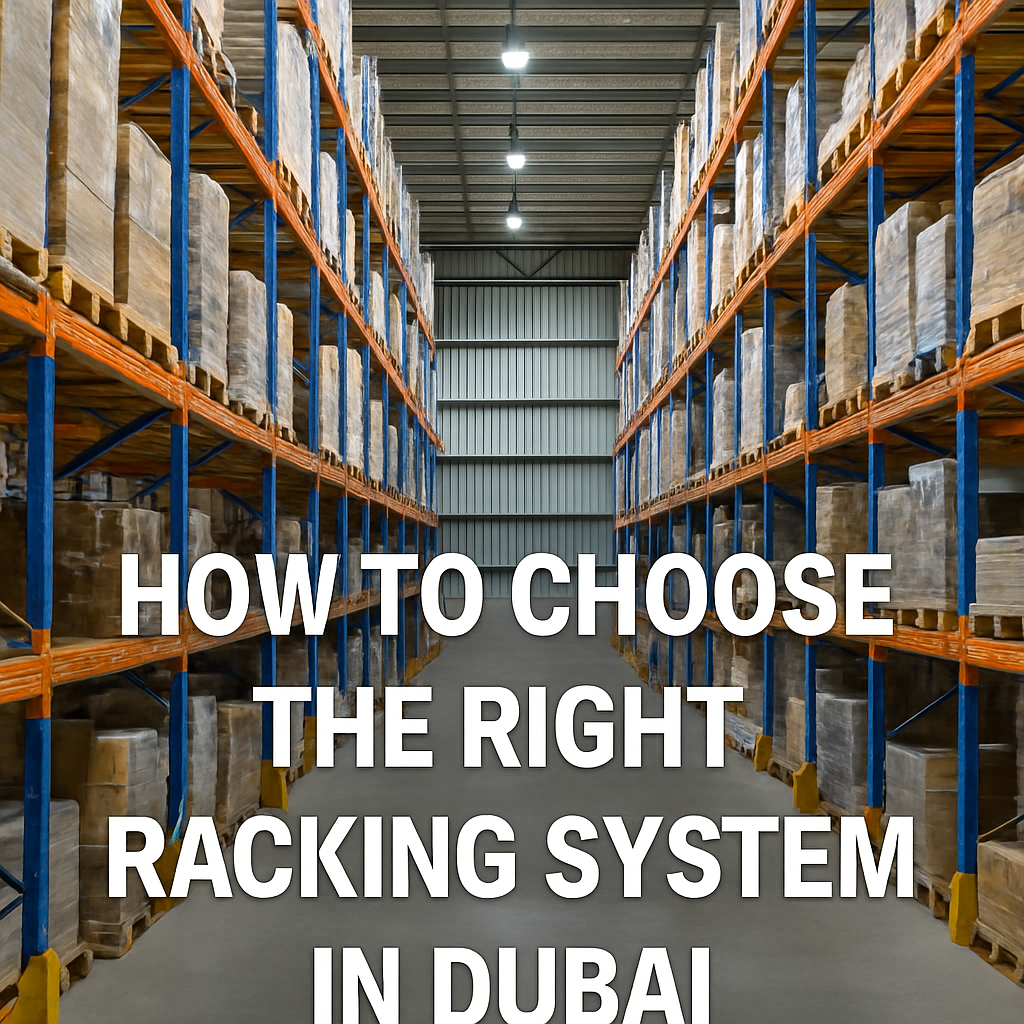
Dubai, UAE — In a city defined by scale, speed, and innovation, choosing the right racking system has become a critical business decision—not just a logistical one. As Dubai’s warehousing and logistics sectors continue to expand at breakneck speed, driven by e-commerce, re-exports, and infrastructure megaprojects, warehouse operators are under growing pressure to optimize storage, streamline operations, and reduce overhead. And it all starts with the racks.
Why Racking Matters More Than Ever
The right racking system isn’t just about stacking inventory—it directly influences operational efficiency, safety compliance, space utilization, and fulfillment speed. For companies operating in Jebel Ali Free Zone, Dubai South, or Al Quoz, where real estate costs are high and customer expectations are even higher, making the wrong choice can lead to lost revenue and operational friction.
According to industry data, over 60% of warehouse inefficiencies in the GCC stem from improper racking layouts or outdated systems.
Key Factors to Consider
Before installing or upgrading racking infrastructure, businesses must weigh a number of crucial variables tailored to Dubai’s unique market conditions:
1. Nature of Inventory
Understanding product type, size, weight, and turnover rate is foundational. For example, high-volume FMCG goods require different storage than spare parts or cold chain pharmaceuticals.
“We tailor racking to SKU behavior. A high-turnover item doesn’t belong on the top rack,” says Mahmoud Rizk, Head of Operations at a logistics firm in Dubai South.
2. Space Optimization
With commercial and industrial rent rising in logistics zones, maximizing cubic volume—not just floor area—is key. Businesses should explore multi-tier and very narrow aisle (VNA) systems to capitalize on vertical space.
3. Compliance & Safety
Dubai Municipality and Civil Defense require all racking installations to meet rigorous safety standards, including load-bearing certifications, fire safety spacing, and seismic compliance. Working with certified vendors who understand local codes is not optional—it’s mandatory.
4. Scalability
Dubai’s logistics operations are dynamic. A racking system must be modular and scalable, capable of adapting to changing business volumes and product types without requiring a complete overhaul.
5. Technology Integration
Modern racking should accommodate automated systems, RFID tracking, and IoT sensors. Warehouses transitioning toward Industry 4.0 need racks designed with digital infrastructure in mind.
Local Expertise: The Competitive Advantage
International vendors may offer advanced racking systems, but Dubai-based providers like Planet Racking bring the added benefit of market-specific expertise—understanding not only climate constraints (think heat-resistant coatings) but also zoning regulations, Arabic documentation, and free zone compliance.
“You can’t plug in a Western system and expect it to perform optimally in Dubai’s operational and environmental context,” notes Sara Al Shehhi, a senior consultant for warehouse design projects in Dubai Industrial City.
Common Mistakes to Avoid
- Overengineering the system: Investing in expensive, complex systems that exceed actual operational needs.
- Ignoring fire safety codes: Especially dangerous given Dubai’s strict inspection regime.
- Choosing based solely on price: Cheaper systems may lack durability, safety, or future scalability.
- Failure to future-proof: A racking system that works now may not suit a business in 2–3 years.
Conclusion: Racking Is a Strategic Decision
In Dubai’s fast-paced logistics landscape, storage isn’t just a back-end function—it’s a competitive differentiator. Whether building a facility from scratch or optimizing an existing warehouse, choosing the right racking system can mean the difference between growth and gridlock.
Investing in customized, compliant, and scalable racking solutions is no longer a luxury—it’s a business imperative.